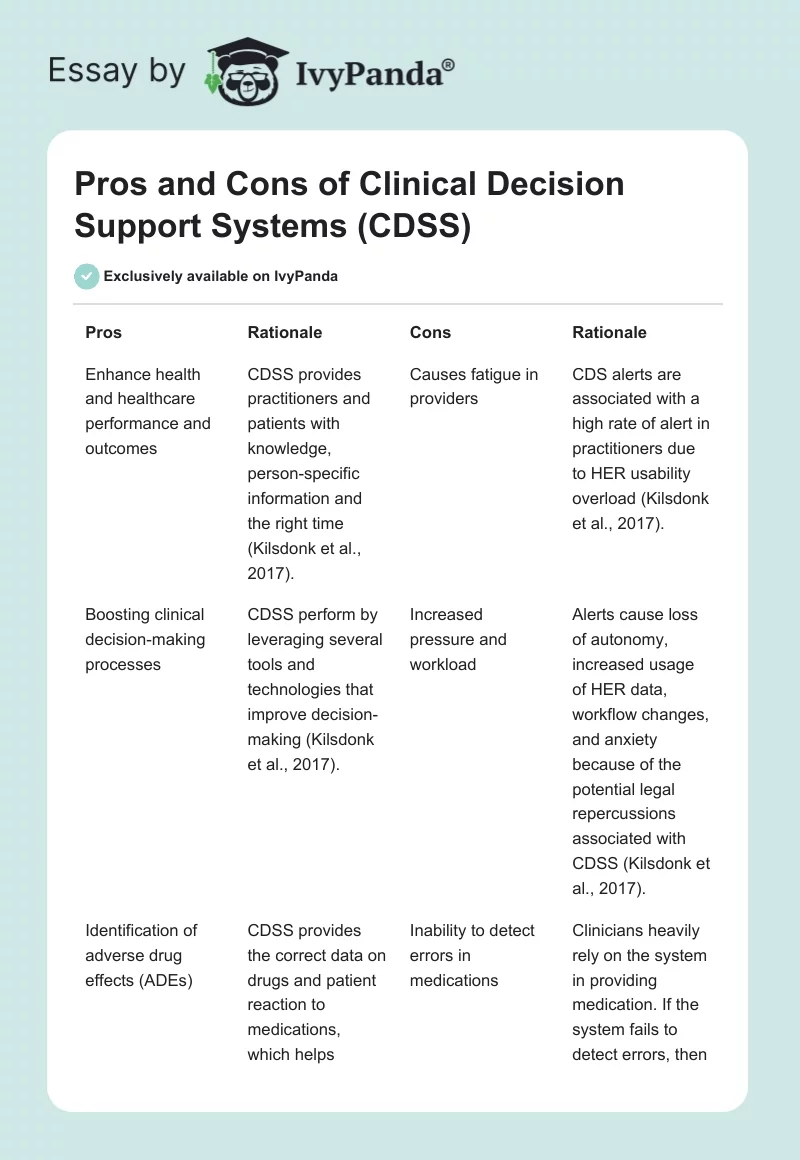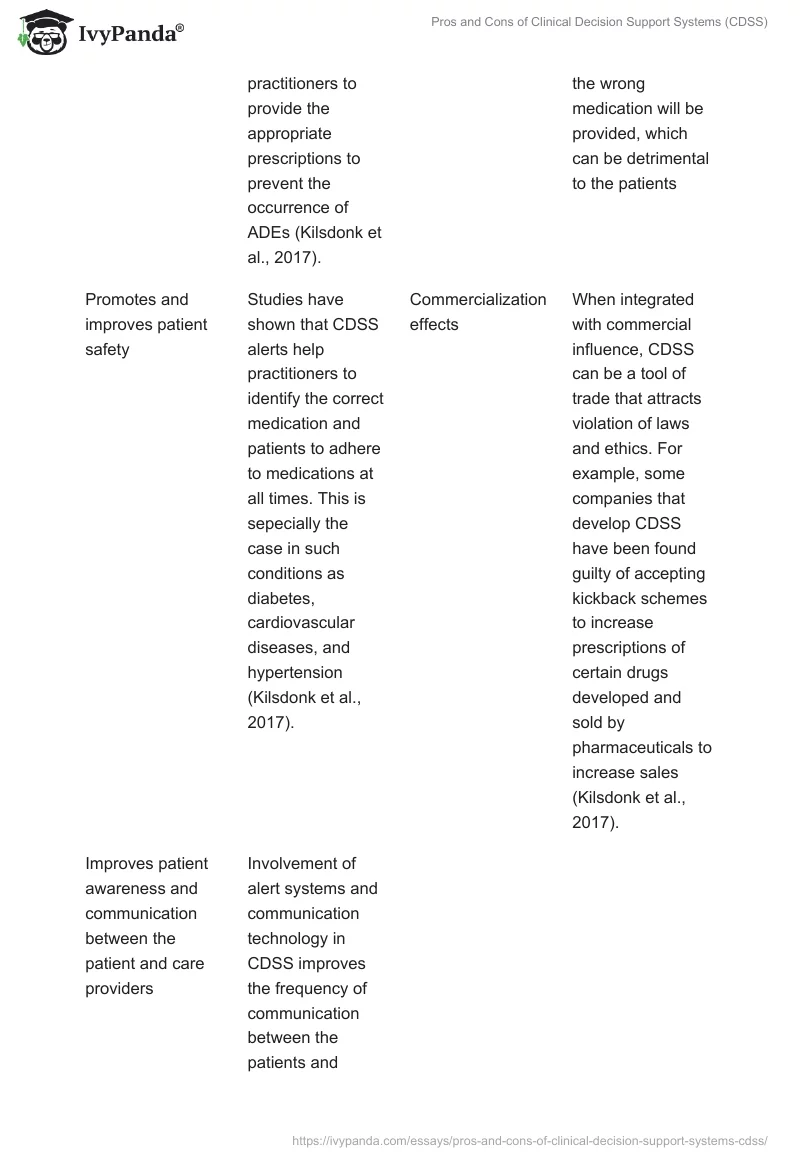| Pros | Rationale | Cons | Rationale |
| Enhance health and healthcare performance and outcomes | CDSS provides practitioners and patients with knowledge, person-specific information and the right time (Kilsdonk et al., 2017). | Causes fatigue in providers | CDS alerts are associated with a high rate of alert in practitioners due to HER usability overload (Kilsdonk et al., 2017). |
| Boosting clinical decision-making processes | CDSS perform by leveraging several tools and technologies that improve decision-making (Kilsdonk et al., 2017). | Increased pressure and workload | Alerts cause loss of autonomy, increased usage of HER data, workflow changes, and anxiety because of the potential legal repercussions associated with CDSS (Kilsdonk et al., 2017). |
| Identification of adverse drug effects (ADEs) | CDSS provides the correct data on drugs and patient reaction to medications, which helps practitioners to provide the appropriate prescriptions to prevent the occurrence of ADEs (Kilsdonk et al., 2017). | Inability to detect errors in medications | Clinicians heavily rely on the system in providing medication. If the system fails to detect errors, then the wrong medication will be provided, which can be detrimental to the patients |
| Promotes and improves patient safety | Studies have shown that CDSS alerts help practitioners to identify the correct medication and patients to adhere to medications at all times. This is sepecially the case in such conditions as diabetes, cardiovascular diseases, and hypertension (Kilsdonk et al., 2017). | Commercialization effects | When integrated with commercial influence, CDSS can be a tool of trade that attracts violation of laws and ethics. For example, some companies that develop CDSS have been found guilty of accepting kickback schemes to increase prescriptions of certain drugs developed and sold by pharmaceuticals to increase sales (Kilsdonk et al., 2017). |
| Improves patient awareness and communication between the patient and care providers | Involvement of alert systems and communication technology in CDSS improves the frequency of communication between the patients and providers (Kilsdonk et al., 2017). Moreover, the system keeps track of the patients, which means that the providers are always aware of the situation and conditions of their patients at all times. |
Reference
Kilsdonk, E., Peute, L. W., & Jaspers, M.W. M. (2017). Factors influencing implementation success of guideline-based clinical decision support systems: A systematic review and gaps analysis. International Journal of Medical Informatics, 98, 56-64. doi: 10.1016/j.ijmedinf.2016.12.001


